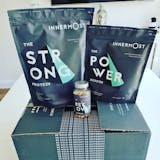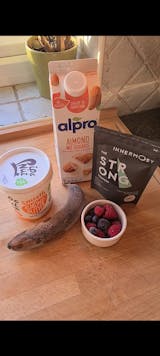You’re probably here because you’re looking to get into cycling. Welcome! Congratulations, and welcome to the club.
At this point, you might be feeling a little bit overwhelmed when it comes to all things cycling: choosing a bike, deciding what to wear, the differences between mountain bikes and road cycling bikes… the list goes on.
The first thing to do is remember not to panic. Everyone was a beginner once, so soak up any advice like a sponge. Cycling is no easy feat, and whilst there’s loads to learn, you’ll be surprised with how quickly you pick up tips and tricks, expert knowledge and subsequently gain cycling confidence with every single ride.
The first step is the hardest, after all!
How to get into cycling
If you’re on the cusp of starting your cycling adventure, you may be looking for the final nudge to take the plunge. So, take this as your sign. We’d highly recommend you do some research into local groups and cycling clubs so that you aren’t navigating your first rides alone. From road cycling groups to mountain biking groups and organisations, there’s sure to be something that fits your interests in and around your local area.
Failing that – put out a call on social media. You’ve got nothing to lose, and you might just find your biking partner for life. Wouldn’t that be something?
When it comes to tips on how to get into cycling, we’d have to write a novel-length piece to give you all the advice that possibly comes to mind. As with any new skill, sporting discipline or hobby (whether fitness related or not), you’re never going to know everything. Saying that, though, when it comes to cycling for beginners, we think these are the key things you should consider:
- What type of bike are you going to purchase and use?
- What size bike do you require?
- Do you currently own suitable clothing? If not, what do you need to buy?
- Do you own an undamaged helmet?
To help you get to the bottom of some of these questions and considerations, we’ve put together what we like to call, our top three cycling tips for beginners that will get you up and running (or cycling, should we say).
How to check a bike is the right size for you and your needs
Getting the right size bike for you is something that everyone struggles with, even the pros. Adjusting your bike can be a lifelong relationship that relies on factors such as environment, performance goals and more.
Never fear, though, there are some basic tips that you can follow, and with the help of a professional, you’ll be able to find a bike that is a great fit, helping you avoid injury and optimise your results.
- Measure your overall height and make a note of this
- Next, measure the height of your inside leg and again, make a note
- To measure your reach, measure your arm span
- Next, minus your height from the arm span, giving you your reach
Many times, when you are deciding for a larger bike or one that is slightly smaller than your height would indicate that you need, your ape index is the deciding factor (step three and four). At the end of this measurement exercise, if you have a positive ape index, we recommend that you opt for the larger bike. With a negative ape index, go for the smaller bike. Make sense?
How to fix a bike tyre puncture
Everyone remembers their first tyre puncture like it was yesterday. The panic, the scramble to check if you remembered your kit… we’ve all been there.
When this happens to you, remember to stay calm and if you’re in the middle of a road cycle, get yourself somewhere safe before you attempt to fix the issue. You’re going to need a few things to ensure your ride is what we like to call puncture-proof: a handheld bike pump, tyre levers and some spare inner tubes (or any puncture repair kit that you can find in all good bike stores).
Here are the key steps to fixing a tyre puncture on-the-go:
- Remove the wheel and inner tube to locate the puncture hole
- Scuff up your new inner tube in the area of the puncture hole
- Apply the glue included in your puncture pack generously over and around the puncture area
- Leave to dry for at least five minutes
- Apply the puncture patch to the affected area
- Use the pump to inflate the new inner tube
How to stay safe when riding on the roads
There’s no way to say this without sounding like a preachy parent: cycling safety is key. Cycling on roads is no joke, people.
Okay, rant out the way: we’re sure you know the dangers of the road. But sometimes, just sometimes, you can’t predict what is going to happen, and need to be aware of your surroundings to ensure you’re not the victim of a road traffic accident, whether it’s caused by yourself or otherwise. After all, these things happen, so it’s best to be prepared.
Here are our top tips for staying safe whilst cycling on the roads:
- Wear bright, reflective clothing (especially at dusk and dark)
- Always wear a helmet
- Be aware of slippery surfaces
- Obey traffic lights at all times
- Always signal clearly to other road users
- Use bike lights to be seen and stay safe
- Position yourself so that you are always visible to motorists
- Stay hydrated and keep your energy levels high
Summary
Cycling is a great way to stay fit, make the most of the great outdoors and even meet new people, so, if you’re weighing up the pros and cons of getting into cycling, we definitely recommend you give it a go.
Just make sure that you’re well prepared and staying safe when out and about. And that means staying hydrated and keeping energised, too! The Energy Booster is a great way to do that... if we haven't mentioned before. Hint hint.
Have fun, Innermosters! Happy cycling.
























